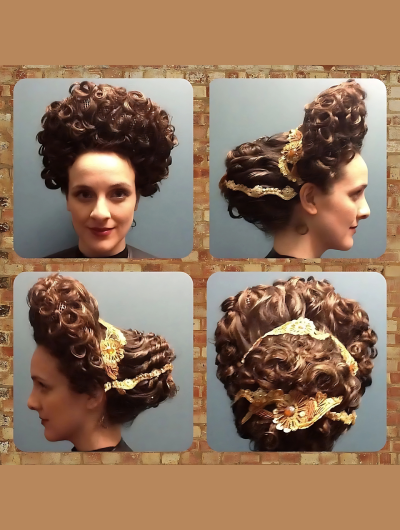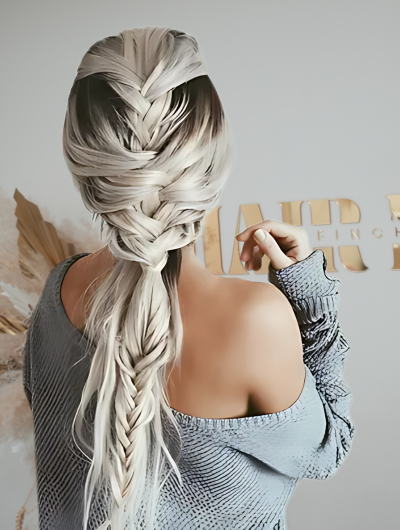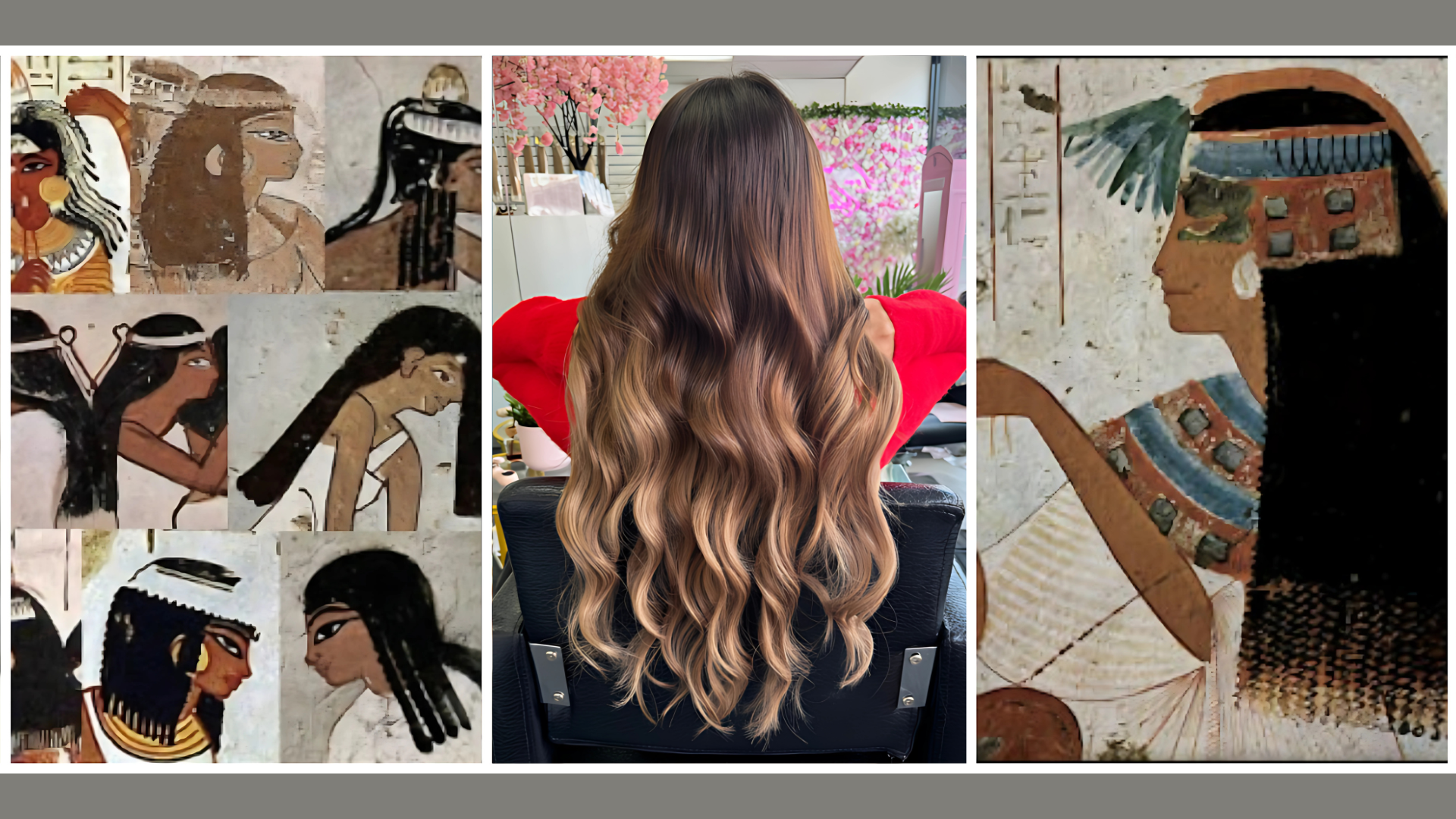Hair extensions have been around for far longer than most people realise. While today they’re seen as a modern beauty trend fuelled by celebrities, influencers, and high-end salons, the truth is that humans have been experimenting with enhancing their hair for thousands of years. From ancient Egyptian wigs made of human hair and plant fibres to cutting-edge keratin-bonded extensions and invisible tapes, the evolution of hair extensions is a fascinating journey through history, culture, and innovation.
In this blog, we’ll take you through the rich history of hair extensions, explore how techniques have transformed over time, and look at where the industry is headed in the future — plus why choosing the right Hair Extension Salon London can make all the difference for achieving the perfect look.
A Glimpse into the Past: Ancient Beginnings
The earliest recorded use of hair extensions dates back over 3,000 years to Ancient Egypt. For the Egyptians, hair wasn’t just about beauty — it was a statement of status, wealth, and identity.
- Wigs and Weaves: Both men and women wore wigs crafted from human hair, sheep’s wool, and plant fibres. These were often dyed black or blue to symbolise youth and vitality.
- Beaded Extensions: Wealthier Egyptians adorned their wigs and natural hair with gold beads, thread, and ornaments to show social standing.
- Practicality in the Heat: Since the climate was harsh, wigs and extensions also helped protect the scalp from the sun while allowing Egyptians to maintain an elegant look.
Interestingly, archaeologists have discovered mummified remains with intricately braided hairpieces still attached, proving how significant extensions were in Egyptian society.
The Roman Empire: Power, Prestige, and Fashion

By the time we reached the Roman Empire (27 BC – AD 476), hair extensions had evolved into a full-blown status symbol. While the Egyptians used extensions for protection and cultural identity, the Romans embraced them as a sign of luxury and power.
- Blonde Craze: Roman women were particularly obsessed with blonde hair, often importing wigs made from the hair of captured Germanic tribes.
- Braided Masterpieces: Elaborate hairstyles with plaits, twists, and coils became fashionable among wealthy women, often achieved using human and animal hair extensions.
- Men and Hairpieces: Surprisingly, Roman men weren’t left out — many used discreet hairpieces to combat early baldness.
In this period, the evolution of hair extensions shifted from practical use to pure indulgence and vanity, setting the stage for centuries of beauty-driven innovation.

The Middle Ages: Modesty Meets Elegance
During the Middle Ages in Europe, society’s attitude towards beauty and hair became more conservative, influenced heavily by religious norms.
- Women often covered their natural hair with veils, wimples, or headdresses, but extensions didn’t disappear entirely.
- High-born women secretly used human hair pieces to create volume beneath elaborate head coverings.
- Extensions were also braided into natural hair for special occasions, though this was more common among the nobility.
Unlike the lavish Roman styles, Middle Age hair enhancements were subtle and hidden, demonstrating how cultural and religious values shaped beauty trends.
The Renaissance: Art, Beauty, and Extravagance

The Renaissance period (14th to 17th century) brought an explosion of art, creativity, and fashion — and hair was no exception. This was a time when self-expression reigned supreme, and the evolution of hair extensions took another leap forward.
- Voluminous Wigs: Inspired by royalty, wealthy women wore wigs and padded hairpieces to achieve towering hairstyles.
- Hair Colour Trends: Blonde hair became especially desirable, as it was associated with purity and beauty in Renaissance art. Some even used saffron and sulphur mixtures to lighten their extensions!
- Royal Influence: Queens and noblewomen heavily influenced fashion, making elaborate hairstyles and extensions a symbol of wealth and sophistication.
By this stage, hair enhancements were no longer a luxury for select individuals — they were a cultural phenomenon.

The 17th & 18th Centuries: The Rise of the Wig Craze
The 17th and 18th centuries marked one of the most dramatic chapters in the history of hair extensions and wigs.
- The “Periwig” Era: During the reign of King Louis XIV of France, powdered wigs — known as periwigs — became incredibly popular among European aristocracy.
- Status and Sophistication: Wigs grew taller and more extravagant, decorated with feathers, jewels, and even miniature props like ships and birdcages.
- Health and Hygiene: Ironically, wigs also became practical solutions for covering up baldness and hair loss caused by poor hygiene and diseases like syphilis.
In Britain, King Charles II famously popularised wigs, influencing both men and women to wear them as markers of wealth and refinement. This period proved that the evolution of hair extensions wasn’t just about beauty — it was closely tied to power and prestige.
The Victorian Era: Subtle Elegance Returns
Moving into the 19th century, the Victorian era brought a shift towards more natural, understated beauty. While wigs faded from mainstream fashion, hair extensions gained new prominence.
- Switches and Chignons: These were lengths of hair — often sourced from real human donors — that women clipped or pinned into their natural locks for extra volume.
- Sentimental Keepsakes: Interestingly, Victorian women often used the hair of loved ones to create ornamental braids and accessories, symbolising love and memory.
- Industrial Revolution Influence: With improved tools and techniques, extensions became more accessible to the middle class, marking a turning point in their popularity.
This era focused less on theatrical looks and more on natural elegance, shaping the foundations for modern hair extension techniques.
The 20th Century: Hollywood, Glamour, and Innovation
The 20th century revolutionised the evolution of hair extensions. With cinema, photography, and advertising booming, beauty became a global obsession, and hair played a starring role.
1920s–1940s: The Flapper and the Film Star
- Short, sleek bobs became trendy, but hairpieces and clip-ins were still used to achieve volume and symmetry.
- Hollywood actresses popularised glamorous curls and waves, inspiring everyday women to experiment with extensions.
1950s–1970s: Pop Culture Takes Over
- The rise of icons like Marilyn Monroe, Brigitte Bardot, and Diana Ross put voluminous hair on the map.
- Synthetic hair entered the market, making extensions more affordable and accessible.
- Afro-textured hairpieces gained popularity among Black communities, embracing natural texture and cultural pride.
1980s–1990s: Bold and Beautiful
- Think big, bold, and unapologetically dramatic. Layered clip-ins and crimped extensions became a fashion statement.
- The beauty industry introduced better-quality synthetic fibres, while human hair extensions became available to a broader audience.
This century’s blend of celebrity culture, innovation, and accessibility paved the way for the modern extension market we know today.
The 21st Century: Invisible Extensions and Instagram Trends

The last two decades have completely transformed the industry. Today, hair extensions are smarter, lighter, and more natural-looking than ever before. With social media driving trends, demand has skyrocketed for undetectable, high-quality options.
- Tape-In Extensions: Tape hair extensions are a salon favourite for their lightweight feel and natural finish..
- Keratin Bonds: Long-lasting extensions fused to natural hair using heat or ultrasonic technology.
- Micro-Rings and Nano-Beads: No glue, no heat — just secure, reusable extensions ideal for sensitive scalps.
- Clip-In Extensions: Perfect for quick styling changes without long-term commitment.
Unlike past centuries, extensions are now mainstream. From celebrities walking red carpets to students experimenting with weekend transformations, today’s products are designed for everyone.
The evolution of hair extensions in the 21st century is also tied to ethical sourcing and sustainability. Salons and suppliers are increasingly opting for ethically sourced, Remy human hair and eco-friendly production methods to meet consumer demand for transparency and quality.

The Future of Hair Extensions: Technology Meets Sustainability
Where do we go from here? The industry is already experimenting with cutting-edge technologies that could shape the next era:
- 3D-Printed Hair Extensions: Researchers are exploring advanced printing techniques for customised textures and colours.
- Smart Extensions: Imagine extensions infused with sensors to monitor scalp health or track UV damage.
- Eco-Friendly Innovation: With growing awareness about environmental impact, expect a rise in biodegradable fibres and circular hair recycling programmes.
As technology advances, we’re likely to see extensions that not only look and feel natural but also prioritise health, sustainability, and inclusivity, with every hair extension supplier focusing on delivering high-quality, ethically sourced products to meet growing consumer demands.
The Beauty of Transformation
From ancient Egyptian wigs to invisible tape-in extensions, the evolution of hair extensions has been nothing short of extraordinary. What began as a symbol of status and cultural identity has transformed into a multi-billion-pound global industry driven by innovation, diversity, and personal expression.
Whether you want extra length, volume, or a whole new look, today’s extensions offer more options than ever before — and the future promises even more exciting possibilities.
FAQ
Who invented hair extensions?
Hair extensions date back to Ancient Egypt, where wigs and braided weaves were used as early as 3400 BC.
When did hair extensions become popular in Europe?
Hair extensions gained popularity during the Roman Empire and again during the 17th and 18th centuries when elaborate wigs became fashionable among European aristocracy.
Are modern extensions different from historical ones?
Absolutely. While ancient and early extensions relied on basic materials like wool, plant fibres, and human hair, modern extensions use advanced techniques for a seamless, natural look.
Are hair extensions safe for my natural hair?
Yes — as long as you choose the right method and have them applied by a professional. Techniques like tape-ins and micro-rings are designed to minimise damage.
What’s next for the hair extension industry?
Expect innovations like eco-friendly fibres, 3D-printed extensions, and more sustainable sourcing in the coming years.

